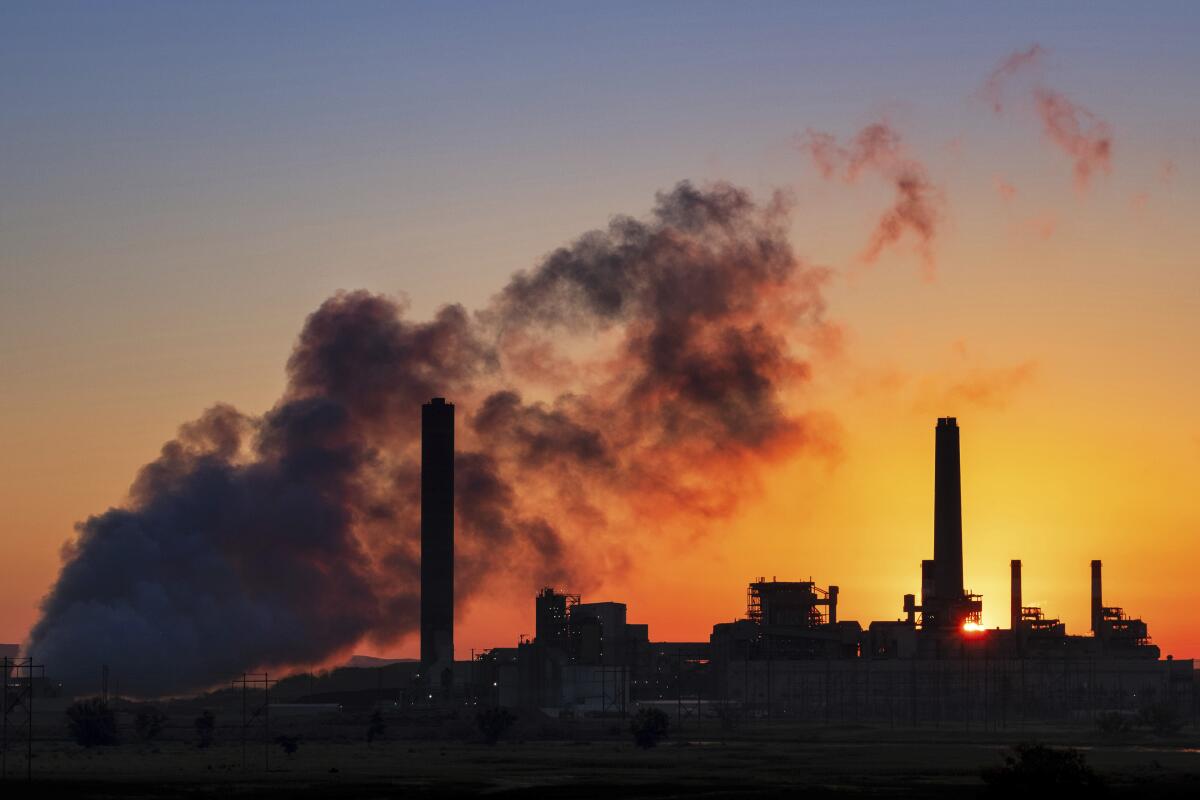Supreme Court blocks EPA rule to limit air pollution from Midwest states

WASHINGTON â The Supreme Court on Thursday blocked an interstate air quality rule issued last year by the Biden administration to limit ozone that comes from power plants and industrial sites in the Midwest and sends polluted air drifting toward the East Coast.
The vote was 5-4, with Justice Amy Coney Barrett joining the three liberals in dissent.
The so-called good neighbor rule is part of the Clean Air Act, and the Environmental Protection Agency says it ensures that sources of air pollution in âupwind statesâ must take steps to reduce it if it is âaffecting air quality in downwind states.â
In its latest update, the EPA targeted 23 states for more stringent regulation, including California in part.
But before the rule could take effect, it was caught up in legal battle between the Republican-led states and the Democratic administration.
Twelve states, led by Texas, won rulings from U.S. appeals courts reversing the EPAâs determination that its air pollution standards were inadequate.
These decisions shielded the states from the new rule.
Undeterred, the EPA pressed ahead to enforce its new rule in the Midwest states that had yet to win exemptions.
The Biden administration argued that a court-ordered âdelay would seriously harm the downwind states that suffer from their upwind neighborsâ emissions, placing the entire burden of achieving healthy air quality on those states and exposing their residents to public-health risks.â
But Ohio, Indiana and West Virginia went directly to the Supreme Court, seeking an order to block the EPAâs rule, at least for now.
They said the Clean Air Act gives states âthe primary responsibility for assuring air qualityâ in this country, and they urged the justices to block the âEPAâs power grab.â They also argued that the EPAâs more stringent controls would harm their industries and âdestabilize their power gridsâ by reducing the production of electricity.
Writing for the majority, Justice Neil M. Gorsuch said, âBecause the states bear primary responsibility for developing compliance plans, EPA has no authority to question the wisdom of a stateâs choices of emission limitations.â
The unusual legal posture of the case prompted an unusual procedural move by the Supreme Court. Usually, the justices agree to review cases after a federal judge and a U.S. appeals court have ruled on the matter.
But in this instance, the justices agreed to hear arguments and write a decision in the case of Ohio vs. EPA before any lower court had ruled on the new regulation.
California was mostly a bystander in this clean-air fight because the new EPA rule did not affect power plants in the state. It would, however, apply to industrial sites beginning in 2026.
More to Read
Sign up for Essential California
The most important California stories and recommendations in your inbox every morning.
You may occasionally receive promotional content from the Los Angeles Times.











